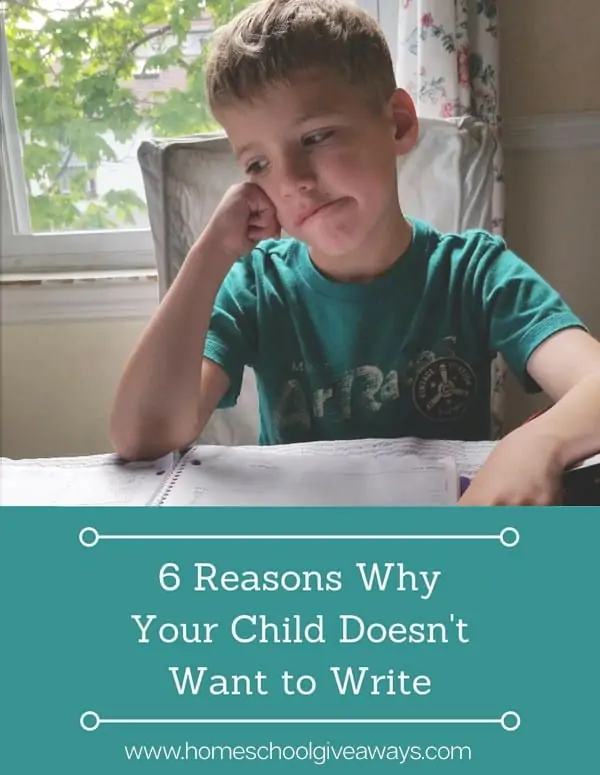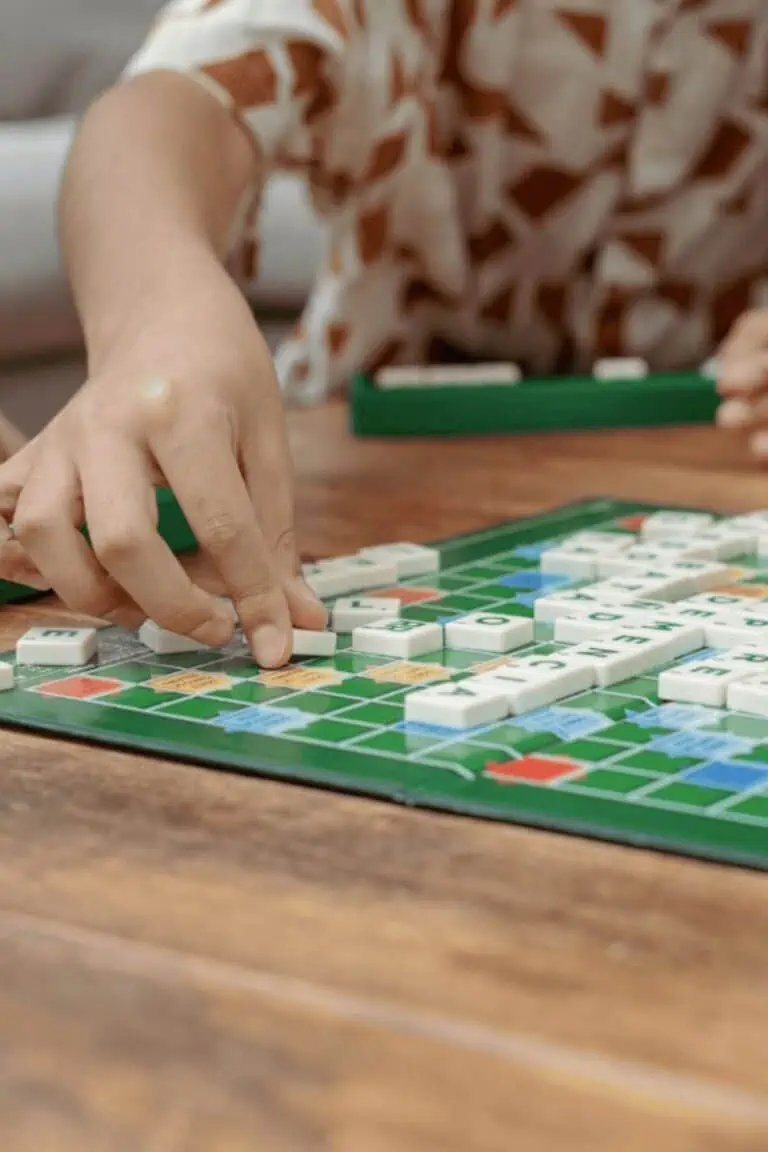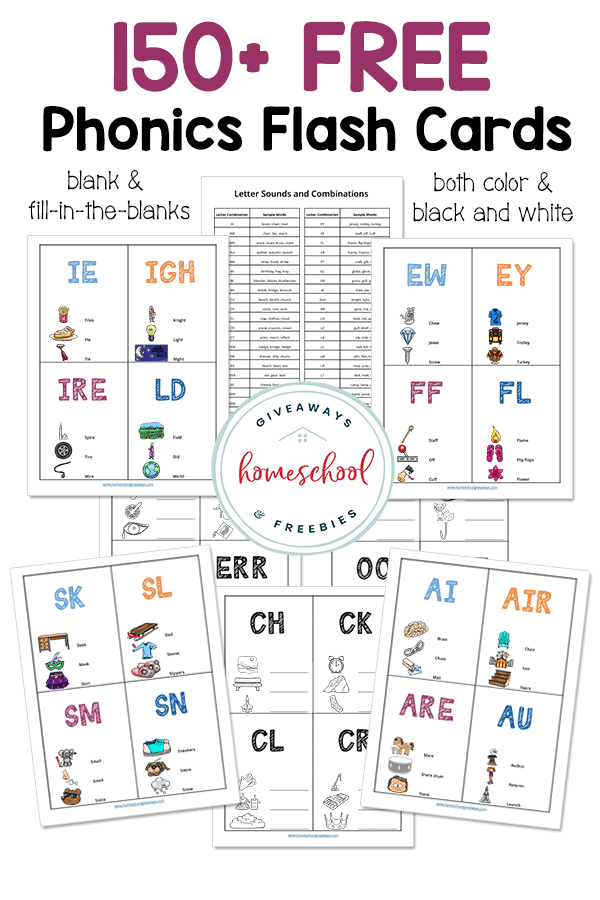6 Reasons Why Your Kids Don’t Want to Write
Published:
February 24, 2018

Contributor:
Carrie
Disclosure: This post may contain affiliate links, meaning if you decide to make a purchase via my links, I may earn a commission at no additional cost to you. See my disclosure for more info.
Many kids say they don’t want to write but they can’t really tell you why. They usually just say, “I don’t like it” (or worse), and then demonstrate their feelings with a bad mood, tears, or both. That leaves us in a predicament. We can’t fix something if we don’t know what’s wrong with it. Since language skills, developed by writing, are the most important skills our kids leave home with, we’ve got to do our part and find out what’s really going on so we can fix the problem.
After talking with thousands of kids who didn’t want to write and probing them for their reasons why, the same six reasons came up again and again:
6 Reasons Why Your Kids Don’t Want to Write
- The problem was an overemphasis on grammar, not writing skill.
Contrary to popular belief, teaching grammar rules does not ensure that children will learn to write well. It’s actual writing lessons, not grammar lessons, that help kids become strong, confident writers. The fact is, only 24% of 12th graders can write a paper, and most of those are of the “write how you feel” variety. Those students have had 12 years of grammar, so obviously something about that approach is not working for teaching composition.
- The child didn’t get specific instruction on how to write.
Most writing programs give more writing prompts than instruction. Prompts don’t show kids how to organize their own thoughts on paper or how to take an idea and develop it. Kids need specific writing instruction taught in logical order: basic skills, i.e., how to format a paragraph, then creative, i.e., creating characters, then descriptive, i.e., describing what they see, then organizational, i.e., sequencing ideas. After they’ve got those elementary skills down-pat, then they’ll be ready to tackle different types of papers.
- The child felt like he just couldn’t please his parent.
If we put ourselves in a child’s position, this makes a lot of sense. He doesn’t want to write to begin with, but at his parent’s insistence he does, and then once the assignment is done the parent marks it up with a red pencil, and then he has to hear everything that’s wrong with it. It’s a no-win situation. Every child’s #1 need is his parent’s approval, so to avoid this scenario, your child would rather fight you than take the risk of failing in your eyes again. It works best to recognize every skill the child uses in his writing, even if those skills are small, because small wins combine to make big ones. Make it a practice to choose a favorite sentence in every paper he turns in. Highlight it, ask him to read it to you, and tell him specifically what you love about it such as, “you used to forget to capitalize but you did that beautifully here.” The more you tell your child that he writes well and demonstrate it to him from his own papers, the better he’ll write. Then put the paper on the refrigerator or take a picture of it and send it to Grandma. As for corrections, after you’ve told him everything that’s right about a paper, give him just one thing that needs to be fixed. For example, say something like, “one adjustment you could make to make this great paper even better would be…” The next time he turns something else in, address that one error again and stay with it until he stops making that error.
- The problem was simply a matter of learning style.
For most kids there is a connection between subject preferences and learning style. For example, some math kids don’t enjoy working with words – theirs or anyone else’s, but here’s the thing: they don’t have to love writing. Sometimes just having a neutral attitude toward it is the better goal, and this one little change in perspective can make a big difference. Try saying, “you know how you feel when you brush your teeth? It’s just a thing you do and you don’t really love it or hate it? Look at writing that way.” Sometimes a neutral attitude works as well as a positive one, so help him see writing as an objective skill rather than a subjective one. To read more about learning styles, check out this amazing book, In Their Own Way,” by Thomas Armstrong.
- The child was overwhelmed by having to learn so much at one time.
On average, the brain can hold and process four ideas at one time. It can go up to seven, but kids retain better if we keep the number down to four. It’s easy to tell when they’ve mastered four writing skills and that it’s time to move on to another four because you’ll see the skills show up – or not – in the work they turn in.
- The problem was physical.
It wasn’t uncommon for kids to not want to write because of a visual problem. Many kids told me they didn’t like to write because their words or those they were reading don’t hold still on the page.” Kids can get so used to a visual problem that they don’t even realize it’s a problem, so we need to do a little questioning once in a while to make sure they’re seeing well, even when you don’t suspect trouble in that area. You could ask, is it easy for you to keep track of the words you read? do the words and letters on this page look clear to you? is it easier to read if you follow along with a bookmark than if you don’t? Fortunately, children struggling with blurred vision or tracking disorders can be helped by specialists in that field.
The Great Writing Pay-Off
It takes intention to dig down and get to the bottom of a writing muddle and figure out why a child is resistant to it. But after you do make the effort and correct what’s not working, you can send him off into his future with the skills he needs to write well for college, career, and beyond. Best of all, your child will always remember that mom and dad think his writing is amazing, and that he has the communication skills that it takes to change the world.
THIS GUEST POST WAS WRITTEN BY:











